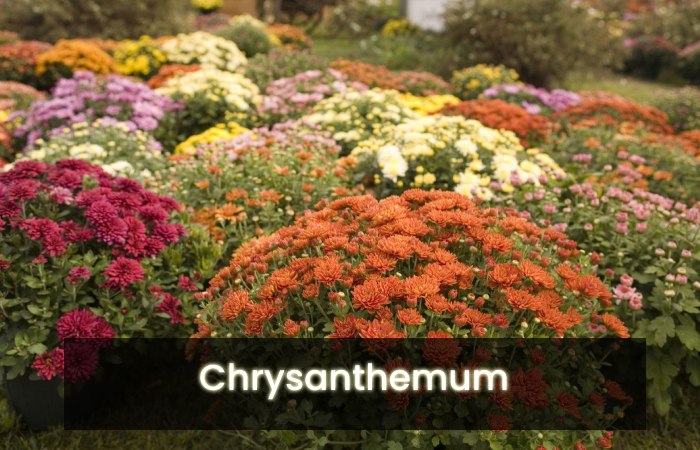Winter flowers are a wonder of nature. Few of us stop thinking that this year’s season is the most difficult for plants. This reason causes plants to have to ration the number of ultraviolet rays. The presence of these rays is vital for photosynthesis, as these are the catalyst for this process.
With this seasonally limited component, it would seem unlikely that there could be flowering plants in winter. However, plant beings have managed to adapt to the adverse conditions of this time of year to produce flowers. Our intention in this article is to explain the details of these impressive creatures. So, keep reading or learn more about it with our Master in Gardening and increase your skills in creating and designing gardens.
Table of Contents
Types Of Winter Flowers In Latin America
Latin America is a region of planet earth that is prosperous in plant life. The diversity of climates available makes the number of flowering plants in winter and at any other time of the year abundant.
The first thing to know about winter flowering plants is that they can be indoors or outdoors. Next, we describe the details of these two categories:
Indoor Winter Plants
Indoor winter flowers are usually plants that can do without a bit of sunlight and can be accommodated in pots. In addition to the excellent adaptation to the low amount of the sun, they do not tolerate high temperatures. For this purpose, we recommend keeping them in cool places with natural lighting. Chrysanthemum and amaryllis are examples of this type of flower.
Winter Plants For Outdoors
These types of winter flowers are ideal for decorating your garden during this time of year. These are widely resistant plants that require the presence of the reduced sunlight typical of the season, and that perfectly tolerate cold air currents. Roses and camellias can be placed in this category.
Care And Special Recommendations For Winter Plants
Each of these winter plants requires special care typical of its species. Despite this, we can list a series of general tips to be successful in the maintenance of these beautiful beings:
- Make sure that the land where you have them planted is well-fertilized.
- Some require a certain amount of moisture. To be able to monitor this aspect, use a moisture meter. In almost all cases, percentages between 40 and 65 will suffice.
- It is preferable to fertilize the land with natural products and avoid chemicals.
- Do not expose them to sudden variations in temperature. Although some plants tolerate this, it is recommended that you avoid it as much as possible, as it deteriorates the quality of life of the plant in question.
- If they are outdoor flowers, water them when the sunlight is not abundant.
- When watering the flowers, try not to do it abundantly. Excess moisture, coupled with weather conditions, can cause the proliferation of fungi and bacteria that will damage the health of your plants.
The care and maintenance of any plant is a serious business. It requires discipline, dedication and patience. Winter flowers are no exception.
The Most Popular Winter Flowers In The Region
There is an endless list of plants that bloom in winter. However, we have tried to make a compilation of the most common in Latin America.
Christmas Eve
It is also known as the poinsettia. Initially, it is green, but it turns a deep red as it matures. It is used in many Latin American countries in interior and exterior decorations, alluding to Christmas.
The Chrysanthemum
This flower is widely known for the variety of colors in which it can appear. Unlike many other plants, this one does not need so much care, and it perfectly resists the low temperatures of the winter season.
The Wallflower
It is a beautiful flower with bright and intense colors. Despite not being native to America, this plant grows very well in this region in the cold season. It has tiny flowers in various shades ranging from purple to white.
The Rose
This is probably the most popular flower. Thanks to genetic manipulation, roses can grow in practically any year’s season. Despite this, roses are trendy flowers in winter.
The Daffodil
It is a plant with bulbs that can be yellow or orange. It usually blooms at the end of winter and tolerates low temperatures very well.
The Camellia
Also called camellia, it is an outdoor flower that grows on bushes with abundant foliage. Typically, this plant usually begins to bloom in December. However, it does so with greater abundance between the end of January and the beginning of February.
The Amaryllis
It is native to Mexico and can be found in Caribbean countries. Despite this, it is perfectly adapted to cold and mountainous climates. Thanks to its beauty and color, it can be cultivated in many parts of Latin America where the temperature is shallow.
The Thought
This is probably the most abundantly blooming plant in winter. It is so versatile that it can be used to decorate interiors and exteriors. In addition, it accepts very well to be planted in gardens or pots.
The Hydrangea
They are flowers with short, wavy petals. It comes in soft colors and pastel shades, making it the perfect decoration for interiors.
The Christmas Rose
It is an ideal plant for cold and humid climates, as it does not have much tolerance to lack of water, and high temperatures dry it immediately. It is an outdoor flower because its root is deep, and the size of its petals is considerably large.
Conclusion
Growing and maintaining plants is an almost artisanal task. In the specific case of winter flowers, we recommend you document yourself about it so that you can give them a quality life and enjoy their presence adorning your environment. If you do not have much knowledge about the care and maintenance of these flowers, come to our specialized master’s degree in it.
